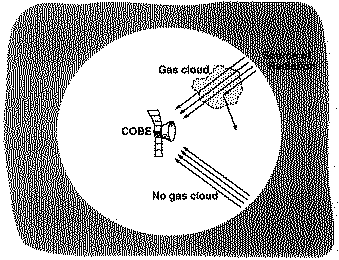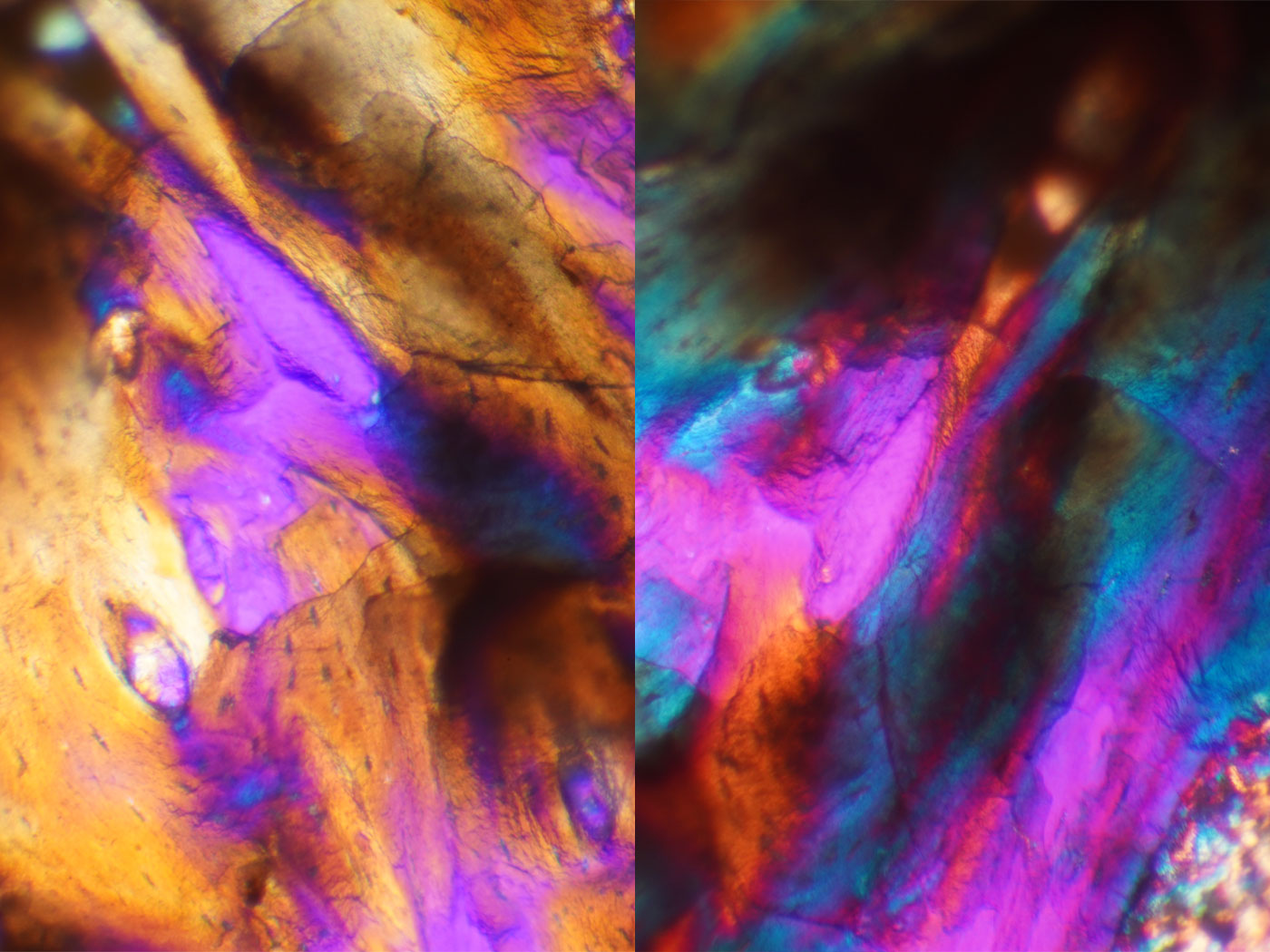In April 1992, a team of scientists working on data from the Cosmic Background Explorer (COBE) satellite made a dramatic announcement: They had found what proponents of the Big Bang theory of the cosmos called the "Holy Grail"--the long-sought "bumps" in the cosmic microwave background radiation. Without really understanding what this meant, newspapers and television commentators reported that the "final proof' for the Big Bang theory had been found, and that "we now know" how the universe began. Theistic evolutionists began trumpeting, even louder, their view that the Bible should be re-interpreted to accommodate the Big Bang's timescale (20 billion years) and evolutionary order of events (sun before earth; death before Adam, etc.). Christian lay people began to ask creationist scientists what the hoopla was all about. What is the cosmic microwave background radiation? What are the "bumps"? Why all the excitement? Is there a creationist explanation? This article seeks to answer those questions.
In 1964, two Bell Laboratories scientists, Arno Penzias and Robert Wilson, accidentally discovered that the earth is bathed in low-intensity microwave electromagnetic radiation coming equally from all directions. The intensities and wavelengths of these microwaves are characteristic of thermal radiation.
Everything emits thermal radiation. Any object at a particular temperature emits thermal radiation with a particular set of intensities and wavelengths. For example, a white-hot light bulb filament at 3000°C emits radiation at high intensities and short wavelengths all across the visible light part of the electromagnetic spectrum. A red-hot coal at 700° C emits lower intensity radiation at longer wavelengths, some of it at the red end of the visible light part of the spectrum and some of it at invisible "infrared" wavelengths. A soldier's body at 37°C emits yet lower intensities and longer wavelengths; his thermal radiation is not visible to the eye, being fully in the infrared part of the electromagnetic spectrum, but it is visible to a sniperscope on cool desert nights.
Yet cooler materials, say liquid hydrogen at minus 253°C (20° above absolute zero), emit very low intensity radiation at relatively long wavelengths (millimeters to centimeters), in the "microwave" part of the electromagnetic spectrum. The microwaves Penzias and Wilson discovered have the intensities and wavelengths of an object just 2.74° above absolute zero.
Immediately after the Penzias-Wilson discovery, many cosmologists began interpreting it as evidence that the universe began in a cosmic explosion 10-20 billion years ago. About a million years after this "big bang," they claimed, the resulting fireball of expanding incandescent gas would cool down to about 3000°C, and the thermal radiation in the fireball would be in the visible light part of the spectrum. At this point, the light would be able to travel freely in all directions through the fireball as it expanded. According to Einstein's General Theory of Relativity, space itself would expand along with the fireball. This expansion of space would stretch out the light waves passing through it, "red shifting" them by a factor of 1000 down to much longer wavelengths. Thus, according to Big-Bang theorists, the cosmic microwave background radiation we see today would be light from their primordial fireball, but red-shifted down to low intensities and long wavelengths.
Big-Bang proponents theorize that small clumps of gas in their primordial fireball grew into stars, galaxies, and clusters of galaxies. The clumps should have left evidence of themselves as hot and cold spots in the cosmic microwave background. That is, as we point our detectors in different directions, we should see slight differences in the temperature of the microwaves from point to point in the sky. Plotted on a map of the sky, these temperature differences would look like hills and valleys, or "bumps." The larger the bumps, the faster the corresponding clumps of gas in the primordial fireball could grow into stars and galaxies.
The early measurements of the microwave background were rather imprecise. However, experimentalists gradually refined their measurements over the years. As they did so, they found no bumps. Late in 1989, the COBE satellite was launched in an effort to make more precise measurements and find the bumps. As of late 1991, COBE was still reporting no bumps in the background. Big Bang theorists were beginning to panic, because the experimental limits on the bumps were beginning to get too low to allow formation of galaxy clusters within the allotted time of billions of years.
That brings us back to the April 1992 announcement. The COBE team had continued to accumulate data: "And now, as COBE reaches the limits of its precision, the team [had] finally found the long-sought bumps."[1] The alleged bumps are "well below the level of instrumental noise," and one team member says, "You can't point to any one point in the data and say that's signal and that's noise."[2] But the team is confident they have good statistical evidence for hot-and-cold spots differing in temperature by about five parts out of a million,[3] i.e., by about one hundred-thousandth of a degree. The team leader, George Smoot, admits that he is "going out on a limb" until other experiments back him up.[4] Even if the results are correct, nobody knows for certain whether these bumps are really intense enough to account for the large-scale structure of the universe. Yet Big-Bang proponents are so relieved to find any bumps, they are breaking out the champagne!
However, in their haste to find bumps in the primordial fireball, Big Bang theorists appear to have forgotten another possible cause of the bumps--a cause that would have nothing to do with the alleged fireball (or any other possible source of the background).[5] Several decades ago two Soviet astrophysicists, R. A. Sunyaev and Ya. B. Zel'dovich, pointed out that as the background radiation passes through large clouds of intergalactic gas, some of the radiation would collide with electrons in the gas, scattering it out of our line of sight and giving it a different wavelength ("Compton scattering").[6] The resulting change of intensity in the background radiation reaching us would be interpreted by COBE as a change in the radiation's temperature. Different lines of sight in various directions would have different changes, depending on the number and size of gas clouds in the cosmos (see Figure 1). Sunyaev and Zel'dovich estimated the resulting bumps could be as large as one part in a thousand. Another author estimated three parts in ten thousand.[7] Since the effect depends on the number and temperature of electrons in the gas clouds, cooler and less-dense clouds could easily cause the smaller bumps which COBE observes, five parts out of a million.

Figure 1, Sunyaev-Zel'dovich theory for "bumps" in the cosmic microwave background. Thermal radiation from one direction interacts with large gas clouds in the cosmos, causing the COBE satellite to register a slightly different temperature than that of the source. Radiation encounters no gas clouds, so COBE registers the true temperature of the source, which is slightly different from that of the first direction.
Thus, even if the source of the background radiation (whether fireball or something else) were perfectly uniform in temperature, the Sunyaev-Zel'dovich effect could account for all of the bumps observed simply by taking account of what would happen to the radiation on its long trip to us. This means that the original source of the radiation could have been very uniform. A smoother source would be very hard on Big Bang theories.
It is not enough merely to criticize evolutionary theories. Creationist scientists must try to offer alternative theories in their place. In 1981, creationists did propose an alternative theory for the cosmic microwave backgrounds.[8] However, the bumps which that theory would predict would be much greater than those actually observed. The only other creationist explanation I know of is an idea I have had for several years. It sprang from about seven years work I have been doing on a young-earth creationist cosmology.[9] Though it is based on Scripture, it is quite consistent with Einstein's General Theory of Relativity.
I have made good progress, but the theory is not mathematically complete and has not been subjected yet to formal peer review. Therefore, it would not be appropriate to explain it here. I hope to present a fairly complete version of the theory at the Third International Conference on Creationism in Pittsburgh during the summer of 1994.
In summary, the brouhaha over the bumps in the Big Bang seems to be much ado about nearly nothing. The observed bumps are at the limit of experimental precision, and really need to be verified by more accurate experiments. Even if they turn out to be real, the bumps could have a simple alternative explanation--an explanation which would put yet more pressure on the Big Bang theory than it is already under. If creationists can provide a good explanation for the cosmic microwave background itself, not just the bumps in it, as my work leads me to believe is possible, the Big Bang theory might turn out to be a "Big Dud"!
[1] F. Flam, "COBE finds the bumps in the big bang," Science 256 ( 1May 1992) 612.
[2] J. Silk, "Cosmology back to the beginning," Nature 356 (30 April 1992) 741-742.
[3] Ibid.
[4] Ibid.
[5] D. R. Humphreys, "Compton scattering and the cosmic microwave background bumps," submitted 19 May 1992 to Nature, Scientific Correspondence section. Copies available from author.
[6] R. A. Sunyaev and Ya. B. Zel'dovich, "Small-scale fluctuations of relic radiation," Astrophysics and Space Science 7 (1970) 3-19, cf. p. 16.
[7] J. V. Narlikar, Introduction to Cosmology (Boston: Jones & Bartlett, 1983) pp. 190-191, 346-347, 457.
[8] R. Ackridge, T. Barnes, and H. S. Slusher, "A recent creation explanation of the 3° K black body radiation," Creation Research Society Quarterly 18 (December 1981) pp. 159-162.
[9] D. R. Humphreys, "C decay and galactic red-shifts," Creation Ex Nihilo Technical Journal 5 (1992) part 1, in press.
* Dr. Humphreys is an ICR Adjunct Professor of Geophysics and Astrophysics at ICR Graduate School and a physicist at Sandia National Laboratories, Albuquerque, New Mexico. The Laboratories have not supported this work.
















